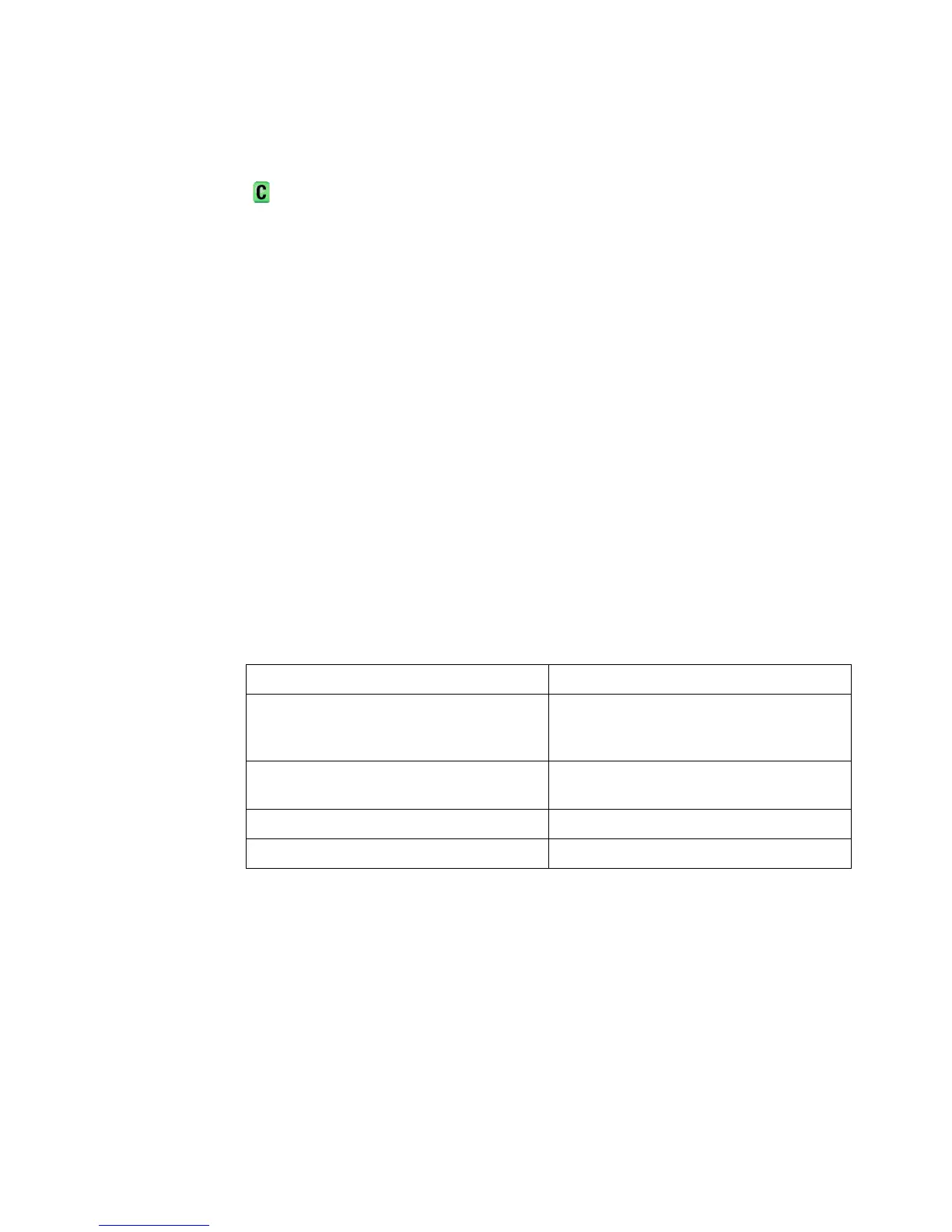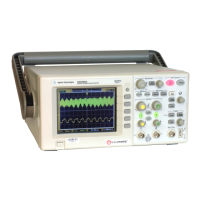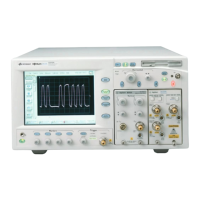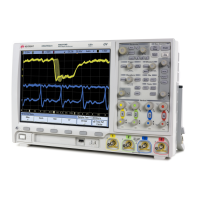:TRIGger Commands 31
Agilent InfiniiVision 3000 X-Series Oscilloscopes Programmer's Guide 919
:TRIGger:PATTern
(see page 1138)
Command Syntax
:TRIGger:PATTern <pattern>
<pattern> ::= <string>[,<edge_source>,<edge>]
<string> ::= "nn...n" where n ::= {0 |1|X|R|F}when
<base> = ASCii
<string> ::= "0xnn...n" where n ::= {0,..,9 | A,..,F |X|$}when
<base> = HEX
<edge_source> ::= {CHANnel<n> | NONE} for DSO models
<edge_source> ::= {CHANnel<n> | DIGital<d>
| NONE} for MSO models
<n> ::= 1 to (# of analog channels) in NR1 format
<d> ::= 0 to (# digital channels - 1) in NR1 format
<edge> ::= {POSitive | NEGative}
The :TRIGger:PATTern command specifies the channel values to be used in
the pattern trigger.
In the <string> parameter, each bit corresponds to a channel as described
in the following table:
The format of the <string> parameter depends on the
:TRIGger:PATTern:FORMat command setting:
• When the format is ASCii, the string looks just like the string you see
on the oscilloscope's front panel, made up of 0, 1, X (don't care), R
(rising edge), and F (falling edge) characters.
• When the format is HEX, the string begins with "0x" and contains hex
digit characters or X (don't care for all four bits in the nibble).
With the hex format string, you can use the <edge_source> and <edge>
parameters to specify an edge on one of the channels.
Oscilloscope Models Value and Mask Bit Assignments
4 analog + 16 digital channels (mixed-signal) Bits 0 through 15 - digital channels 0 through
15. Bits 16 through 19 - analog channels 4
through 1.
2 analog + 16 digital channels (mixed-signal) Bits 0 through 15 - digital channels 0 through
15. Bits 16 and 17 - analog channels 2 and 1.
4 analog channels only Bits 0 through 3 - analog channels 4 through 1.
2 analog channels only Bits 0 and 1 - analog channels 2 and 1.

